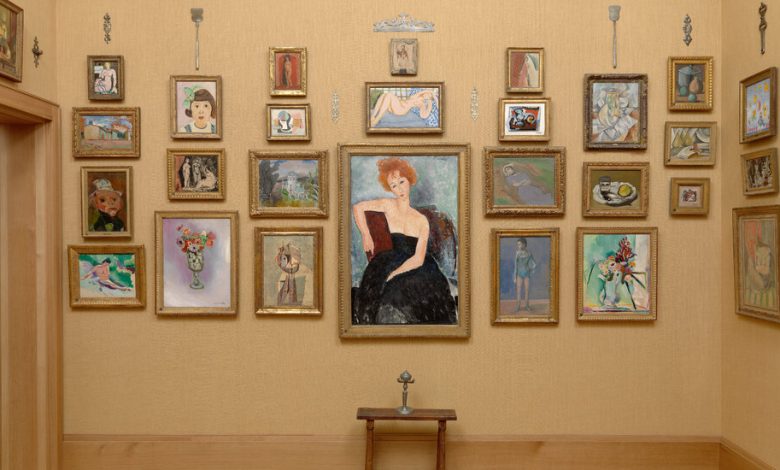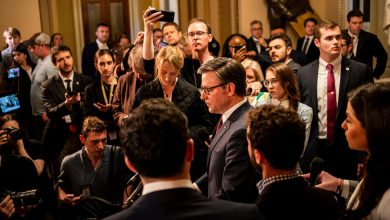The Barnes Foundation Loosens Its Straitjacket

If a visitor goes to the Barnes Foundation, and a favorite Cézanne, Matisse or Renoir is missing because it is on loan to the Louvre, is the Barnes still the Barnes?
Art lovers who have not had to imagine such a scenario may face it soon.
In July, a Pennsylvania judge granted the Barnes’s petition to lend a limited number of storied paintings from its collection galleries to other institutions and to also display them temporarily outside the set configurations established by the obsessive founder, Albert C. Barnes (1872—1951) when he was alive. (An exception was in the 1990s when highlights of the collection toured internationally to raise money to renovate the original building.)
The decision comes just when the drama around the Barnes Foundation’s 2012 move from its original suburban home in Merion, Pa., to a sleek new facility in Philadelphia, sparking years of controversy and outcry, had finally died down.
Both the move and the new lending policy go against Barnes’s wishes as stated in his original indenture of trust, the legal agreement he created in his lifetime. Now, as a result, the collection will look and behave a lot more like a global museum. (There has never been a restriction on commissioning new works.)
Judge Melissa S. Sterling of the Orphans’ Court of Montgomery County, Pa. — where the foundation was originally established — ruled on July 21 that the paintings at the Barnes “may from time to time be lent to other institutions or temporarily relocated within the Foundation’s premises for temporary exhibition purposes consistent with the educational mission of the Foundation.” However, they are subject to a new, 13-point loan policy that she approved.
“At the conclusion of any loan or other temporary relocation of a gallery collection painting, it shall be returned to the place from which it was temporarily removed,” the ruling stipulated.
Under the new policy, no more than 20 paintings (around 2 percent of the collection’s total) can be away from their usual places at any given time. And there are time limits for how long a single work can be away — never more than 15 months out of a 30-month period.
“What we asked for is extremely modest and rather conservative,” Thom Collins, executive director and president of the Barnes, said. “It is all in service of the idea that this is what progressive education looks like in a museum today.”
Richard Feudale, an attorney in Mt. Carmel, Pa., who has been trying to block the new lending policy, filed a motion in Superior Court this week to strike Judge Stern’s ruling. His Aug. 8 motion states that if paintings leave the Barnes on loan, visitors will be reading “a story with pages ripped out.”
The motion added, “This foundation is unique in all the world and its indenture asks one thing, that it be left alone.”
Barnes never called his foundation a museum; he considered it an educational institution. So, Collins emphasized the new possibilities for off-site scholarship and research that the policy would allow, as well as the potential for reciprocal lending. Typically, museums are more likely to lend if they are getting something back, and the Barnes is throwing its institutional weight behind the collection’s temporary exhibition program.
“It’s a way for us to guarantee that the Barnes remains vibrant and relevant,” Collins said.
“Internally we call this a Barnes-plus approach,” he added. “This is about substantially maintaining the experience that Dr. Barnes devised and amplifying it.”
Tom L. Freudenheim, a former assistant secretary of the Smithsonian Institution who had opposed the Barnes’s move from its original home, said that the lending policy did not surprise him, given the institution’s changes over time, including putting on temporary exhibitions.
“The Barnes has been acting like a regular museum,” Freudenheim said. The restrictions of the new lending policy struck him as “silly,” he added. “That’s trying to play it both ways.”
The 2004 legal decision that allowed the Barnes to move was predicated on the idea that the collection would replicate the original configuration of works in the new location, a guideline that was followed within an eighth of an inch.
Collins emphasized that the new ruling allows the Barnes to “lend to itself,” meaning that it can now move paintings into the temporary exhibition galleries that were created when it moved.
The trove of nearly 1,000 paintings amassed by the patent-medicine mogul Barnes is legendary, with its cheek-by-jowl arrangements of Cézannes, van Goghs, Renoirs, Matisses and Picassos.
The more than 2,000 objects that are not paintings, including sculptures and metalwork, are not subject to the same rules of the indenture. However, the collection has never lent them to another institution “out of an abundance of caution,” according to Collins.
Because of that leeway, Collins and his curators have moved sculptures out of their traditional collection gallery spots for temporary exhibitions. An example is Modigliani’s 1911-12 limestone “Head,” which was displayed in the Barnes’s recent “Modigliani Up Close” show.
The Barnes filed its petition to get lending permission for its paintings in January, and two days of hearings were held in April, during which Judge Stern and her staff visited the museum.
After the testimony, the senior deputy attorney general of Pennsylvania, Lisa M. Rhode, issued a “no objection letter” to the policy change, clearing the main legal hurdle. The Barnes consulted the attorney general’s officebefore making its petition.
A spokesperson for the attorney general said in an email to The Times this week that the request “was in keeping with the stated purpose of the Foundation.”
Nick Tinari, a Philadelphia lawyer specializing in intellectual property, disagreed with the ruling, saying that it is “continuing to nibble away at what remains of Dr. Barnes’s carcass.”
Tinari added, “One of the last strictures remaining” of Barnes’s trust, “is the prevention of selling works — that will be next. Mark my words.”
Collins, the foundation’s executive director, said the collection would not sell its works.
Aileen Roberts, chair of the Barnes’s board of trustees, said that it unanimously voted to approve the changes.
“Everyone sees it as a win,” said Roberts, who is married to Brian Roberts, the chair and chief executive of the cable giant Comcast. “What are we giving up? Not much.”
Sara Geelan, the Barnes’s general counsel, said that the loan changes were not an indication that the institution would seek to make further changes to its indenture of trust. “This is not a slow roll of anything else,” Geelan said.
Collins said that no specific outgoing loans were in the works yet, and that the Barnes was not rushing into anything. “Stay tuned,” he said.




